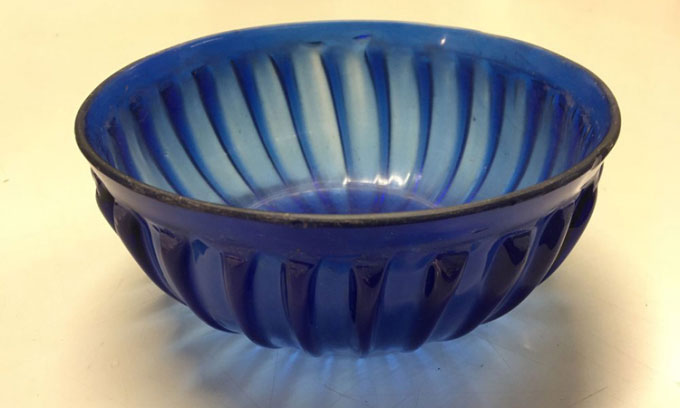The blue Roman bowl, roughly the size of a hand, is made of glass and features decorative stripes around its circumference.
Archaeologists discovered a blue Roman glass bowl dating back 2,000 years during an excavation in Nijmegen, Netherlands, late last year, as reported by Smithsonian on January 28. The bowl, which is hand-sized, was buried underground for centuries but remains remarkably intact, showing almost no signs of wear. Its uniqueness lies in the vertical stripe patterns.

The blue glass bowl is estimated to be around 2,000 years old. (Photo: Municipality of Nijmegen)
“Such bowls were crafted by allowing molten glass to cool and harden in a mold. The patterns were painted while the glass mixture was still in liquid form. Metal oxides create the blue color,” explained lead archaeologist Pepijn Van de Geer.
Nijmegen is one of the oldest cities in the Netherlands, according to Radboud University. The ancient Romans established a military camp near Nijmegen in the 1st century, around the same time the glass bowl was created. The settlement gradually expanded and became the first Roman city in what is now the Netherlands.
The modern name of Nijmegen in Dutch derives from the Latin term Noviomagus, meaning “new market.” Its location overlooking the Waal River provided Roman forces with a strategic military advantage and access to trade routes.
Given Nijmegen’s significant role as a center of ancient Roman activities, experts believe the blue glass bowl may have been crafted by Roman artisans or brought in by traders. According to Van de Geer, the bowl could have been produced in glass workshops in Germany or Italy, becoming a valuable item for trade.
“For the people of the ancient settlement, this bowl holds immense value,” Van de Geer noted. He considers it a truly special artifact that deserves a place in a museum collection.
In addition to the glass bowl, scientists also unearthed numerous graves, dishes, and jewelry. They hope to continue studying soil samples from an ancient well discovered in Nijmegen to learn more about the types of crops in the area.
















































